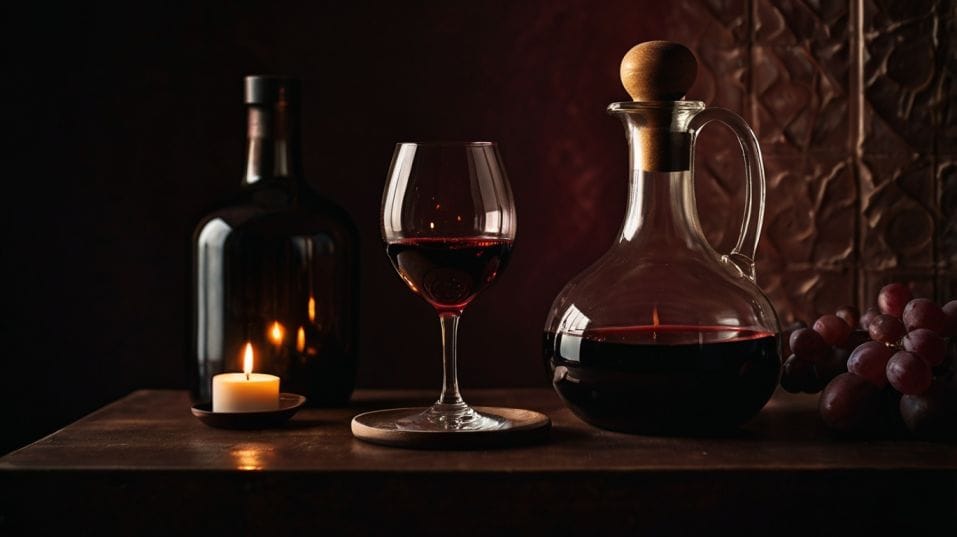Tannins Aren’t the Enemy
Think tannins are too harsh? Think again. Learn how to decode tannins and use texture to taste, choose, and enjoy wine with confidence.

Ever taken a sip of red wine and recoiled at the dryness? Thought, “Is this too much for me?” You’re not alone—but tannins aren’t the villain. In fact, they might be your best ally.
Learn to feel them, not fear them, and you’ll unlock a deeper way to taste. Once you understand tannins, everything sharpens: your palate, your preferences, your confidence. They’re not the obstacle—they’re the invitation.
What Tannins Really Are—and Why They Matter
Tannins are naturally occurring compounds found in grape skins, seeds, and stems. They’re also present in oak barrels, especially new ones.
Unlike acidity or sweetness, tannins affect texture more than taste. You feel them more than you flavor them. That dry, puckering sensation you get from a young Cabernet? That’s tannin at work.
But tannins don’t just dry out your mouth—they frame the entire structure of a wine. They give it grip, tension, and the potential to age well. Without tannins, many reds would feel flabby or flat.
They’d taste pleasant for a moment and disappear without making a lasting impression. In balance, tannins offer shape and durability. They hold everything together.
If you’ve ever noticed how certain wines feel tight or “closed” on first sip but slowly open up in the glass or with food, tannins are part of that evolution.
They soften with time and oxygen. They respond to fat, salt, and protein. They don’t just interact with your palate—they interact with the moment you’re drinking in.

Learning to Feel Tannins, Not Fear Them
Early on, it’s easy to lump all tannins together as “strong” or “bitter,” but not all tannins behave the same way. Some are coarse and chalky.
Others are fine and silky. Some grab your gums; others glide across your tongue like tea. Paying attention to that sensation—how the wine feels, not just how it tastes—is one of the fastest ways to develop your palate.
Tasting the Difference
Try tasting different wines side by side: a young Barolo, a well-aged Bordeaux, a New World Syrah. Notice how the tannins shift. One might feel angular and assertive. Another might feel resolved and rounded.
That contrast is your education. Each wine teaches you something about how tannins can be used—how they evolve, how they hold up a wine’s weight, how they can dominate or dissolve depending on the winemaking choices behind the bottle.
And once you learn to recognize these textural differences, tannins become one of the most useful clues when choosing a wine.
Do you want something firm and structured to pair with food? Or something soft and plush to sip on its own? Tannins help guide that decision. They set the tone before aroma and flavor even come into play.
The Winemaker’s Hand: How Tannins Are Shaped
Tannins don’t show up by accident. Winemakers make deliberate choices that affect how tannins behave in the finished wine.
Choices That Influence Tannin
How long the juice stays on the skins during fermentation, whether whole grape clusters are used (with stems), how gently the grapes are pressed—all of these decisions shape tannin levels and texture.
Even barrel aging plays a role. New oak adds tannins of its own, often with a spicier, toastier character. Old oak? Less so. It softens, rounds, supports.
When you start to understand tannin as a structural decision, not just a natural byproduct, you see wine differently. You notice craftsmanship.
You notice restraint. You can taste the winemaker’s intent, whether it’s to create something powerful and age-worthy or something supple and ready to drink young.
That understanding also gives you more control. You stop blaming the wine when it tastes “too much” and start asking the right questions.
Is it too young? Does it need air? Would it shine with food? Is it meant to age? You move from reaction to interpretation—and that’s a powerful shift.
What Tannins Teach You About Pairing, Patience, and Preference
Tannins don’t just affect how a wine feels—they affect how it performs with food. They crave balance. Rich, fatty dishes (think steak, lamb, aged cheeses) mellow tannins beautifully. Salt can soften them.
Protein binds with them. That’s why some of the world’s great wine and food pairings—Barolo with truffle risotto, Bordeaux with roast meat—work so effortlessly. Tannins aren’t just present. They’re participating.
Patience and the Long Game
They also reward patience. A wine that seems aggressive today may soften and unfurl in five years—or even after a couple hours open.
That’s part of the rhythm of wine: waiting, tasting, returning. Letting a bottle evolve teaches you not to rush. It teaches you that wine isn’t just a beverage—it’s a process.
Knowing What You Like
Most importantly, tannins help you refine your preferences. You may discover that you love firm, grippy reds that demand attention. Or maybe you lean toward smooth, integrated textures.
Either way, understanding tannin gives you a language to describe what you enjoy. It takes the guesswork out of the wine aisle. You know what you’re looking for, and more importantly, you know why.
Final Thoughts
Tannins aren’t your enemy. They’re your entry point. They invite you to taste beyond flavor, to notice what others miss, to experience wine as more than just a drink.
The next time you pour a red that feels bold or grippy, don’t pull back. Stay with it. Swirl. Sip again. Try it with food. Give it time.
You don’t need to memorize regions or chase trends to enjoy wine more—you just need to pay closer attention to what’s in your glass. Start by tuning into texture. Let tannins teach you.
Tonight, open something with structure. Something with presence. Let it challenge you a little. And then, let it win you over.




